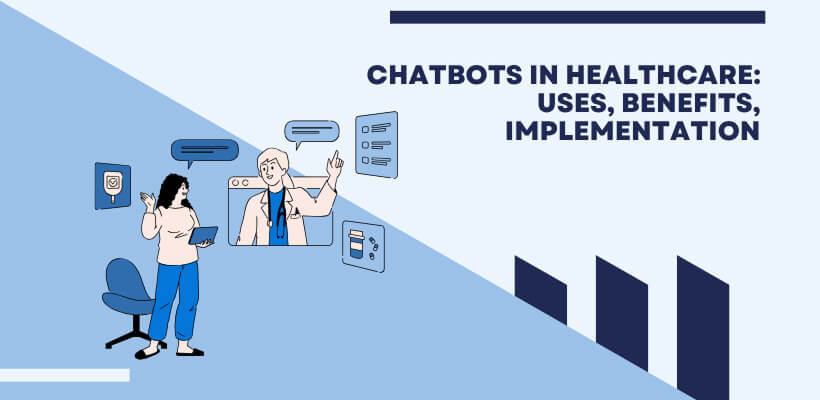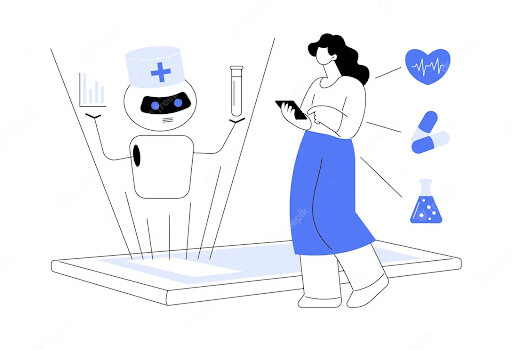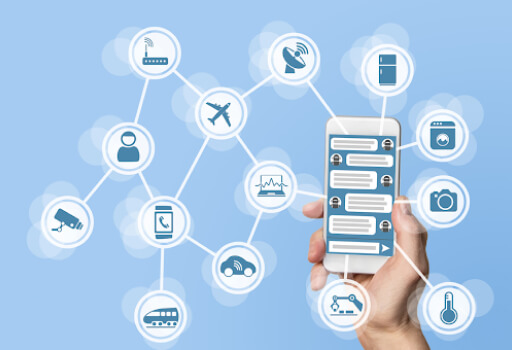 1-800-805-5783
1-800-805-5783 
While analyzing the evolving healthcare ecosystem, chatbots in healthcare are no longer just a novelty, they are becoming integral to delivering smarter, more accessible patient services.
With breakthroughs in large language models (LLMs), generative AI, and agentic systems, chatbots today can do much more than answer FAQs.
They help triage symptoms, integrate with electronic health records (EHRs), monitor chronic conditions, and even detect emotional distress.
In the current year and beyond, as patients expect seamless, personalized digital interactions, health systems are racing to adopt AI agents in healthcare as a core pillar of care delivery, also in 2026.
Patients increasingly expect digital-first health experiences, quick responses, 24/7 access, and personalized interactions.
A recent survey found that features like online scheduling and digital reminders rank high among expectations for modern healthcare.
Health systems globally are under stress from staff shortages and increasing administrative load. Chatbots help offload repetitive tasks (appointment booking, triage, reminders), giving clinicians more time to focus on complex care.
As LLMs (like GPT-4/5) mature, chatbots can handle more nuanced conversations, context retention, and domain specificity.
In fact, recent benchmarking showed a health-AI agent achieved ~81.8% top-1 diagnostic accuracy across 400 vignettes, outperforming many traditional symptom checkers.
Moreover, the shift toward agentic AI, systems that plan and act over multiple steps, is particularly relevant in health.
These systems can autonomously initiate tasks (e.g., schedule follow-ups, fetch lab results) while escalating to humans when needed.

Below are the most impactful and emerging use cases for chatbots in healthcare today:
| Use Case | What It Does Now | Why It’s Gaining Traction |
| Automated patient intake & triage | Chatbots collect symptoms, ask guided questions, flag red flags, and guide patients to next steps (e.g., ER, teleconsult). | Reduces unnecessary clinic visits and streamlines front-desk operations. |
| EHR / backend system integration | Chatbots pull patient history, lab results, allergies, and deliver contextual responses. | More accurate, personalized responses with less friction. |
| Post-visit follow-up & chronic care | Bots send reminders, check symptoms over time, and escalate changes to care teams. | Better disease management and reduced readmissions. |
| Multimodal & voice interfaces | Voice + text bots, use of images, voice tone analysis, and translation capabilities. | More inclusive (elderly, visually impaired), natural interaction. |
| Mental health & emotional support | Conversational agents offering CBT, mood tracking, and crisis escalation. | Increasing demand for scalable mental health support. |
| Medication adherence & prescription support | Bots remind, verify refills, flag dangerous interactions, and order renewals. | Helps address nonadherence and avoid adverse drug events. |
| Insurance/billing & claims assistance | Query coverage, check status, explain benefits. | Improves transparency and reduces calls to insurers. |
| Wellness screening & prevention | Suggest lifestyle changes, send health tips, and detect early signs of risk. | Moves care upstream rather than reactive. |
Some new or cutting-edge deployments:
While powerful, deploying chatbots in healthcare also carries nontrivial risks and obstacles:
LLMs can generate plausible but incorrect responses (“hallucinations”). In clinical settings, a wrong recommendation might do harm. Human oversight and guardrails are essential.
Legal responsibility for an AI’s advice is murky. Some jurisdictions are already restricting AI in mental health therapy (e.g., Illinois banned AI therapy use without licensed oversight).
Handling PHI (protected health information) demands compliance (HIPAA, GDPR, etc.). Secure infrastructure, encryption, and audit trails are non-negotiable.
AI systems may underperform for underrepresented groups or produce biased responses. Moreover, populations without good internet access or digital literacy can be left behind.
Some patients are wary of AI diagnosing them. In one survey, 47% expressed distrust toward AI/chatbots.
Also, using AI as a substitute for therapy may lead to adverse outcomes; health systems have cautioned against overreliance.
Many providers use dated EHRs or siloed systems. Integrating conversational AI reliably is a technical and organizational hurdle.
Also read: Ethical Considerations and Bias Mitigation in Generative AI Development

To deploy chatbots in healthcare responsibly and effectively, consider the following:
Q1. Can chatbots in healthcare ever replace doctors?
No — they’re assistants, not replacements. Chatbots help with routine tasks, triage, reminders, or information. Complex diagnosis, judgment, and treatment decisions always need human clinicians.
Q2. Are healthcare chatbots safe for mental health support?
They can help with mood tracking, CBT exercises, and coaching, but should never act as standalone therapists. Some regions already regulate AI therapy to avoid harm.
Q3. How accurate are chatbots in diagnosing medical conditions?
Benchmarks show promising accuracy (e.g., ~81.8% top-1 accuracy in diagnostic vignettes) but real-world accuracy depends heavily on data quality, context, and oversight.
Q4. What are the biggest barriers to adoption?
Challenges include regulatory compliance, integration complexity, trust, liability, AI hallucinations, equity and bias, and change management in institutions.
Q5. How do we evaluate the ROI of a chatbot?
Metrics include: reduction in support costs, call deflection rate, appointment no-shows, increased patient satisfaction, clinician time saved, and impact on throughput.
Q6. What’s new in 2025 for chatbots in healthcare?
We’re seeing integration with wearables, multimodal interfaces, agentic AI that can autonomously plan tasks, and increased use by physicians as decision support.
In 2025 and beyond, chatbots in healthcare are shifting from promising pilots to mission-critical systems.
They help relieve administrative strain, improve patient engagement, enable preventive care, and support clinicians with timely insights.
But success depends on responsible design — rigorous validation, human oversight, transparent governance, and careful integration.
At [x]cube LABS, we craft intelligent AI agents, including chatbots in healthcare, that seamlessly integrate with your systems, enhancing efficiency and innovation:
Integrate our Agentic AI solutions to automate tasks, derive actionable insights, and deliver superior customer experiences effortlessly within your existing workflows.
For more information and to schedule a FREE demo, check out all our ready-to-deploy agents here.